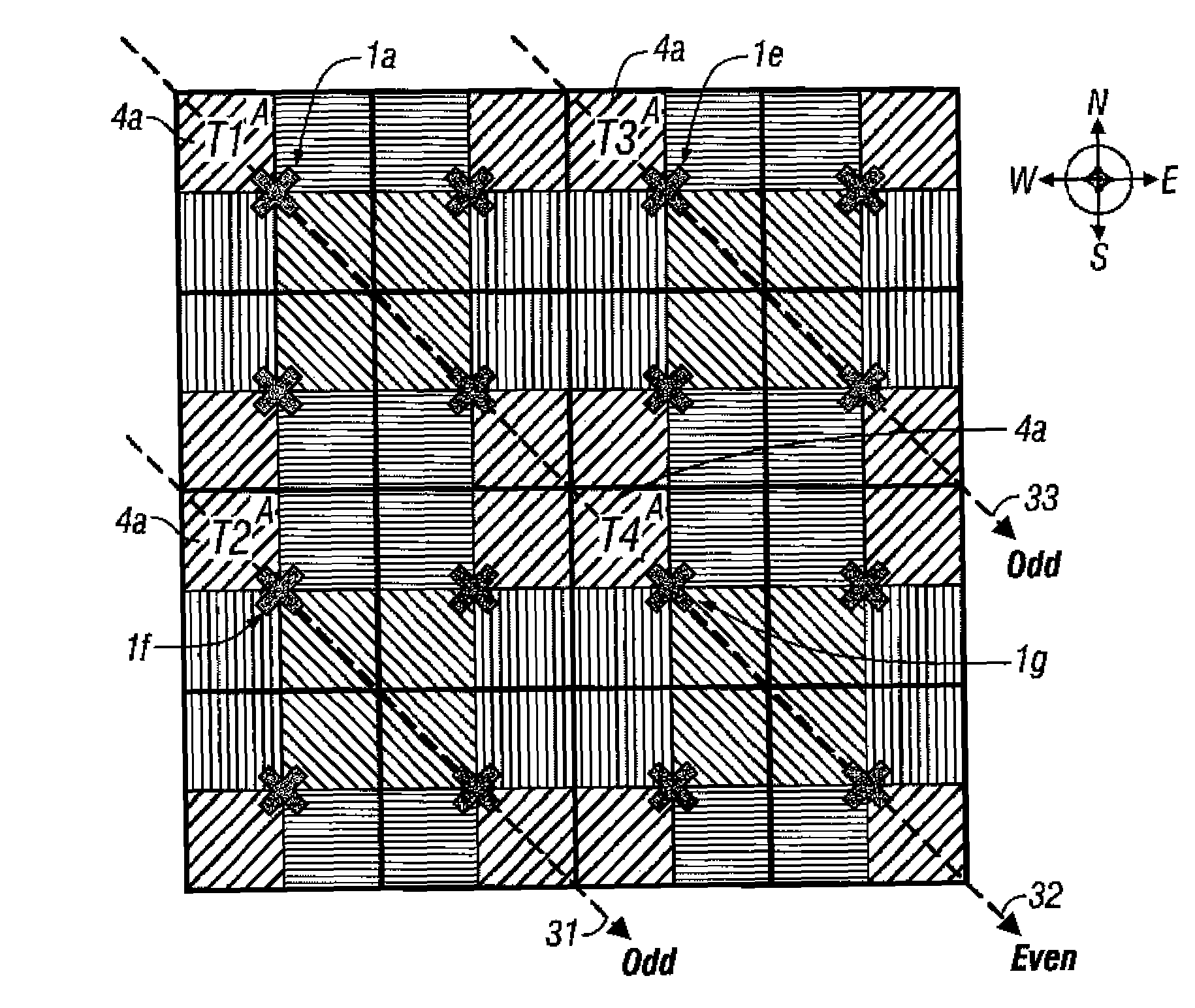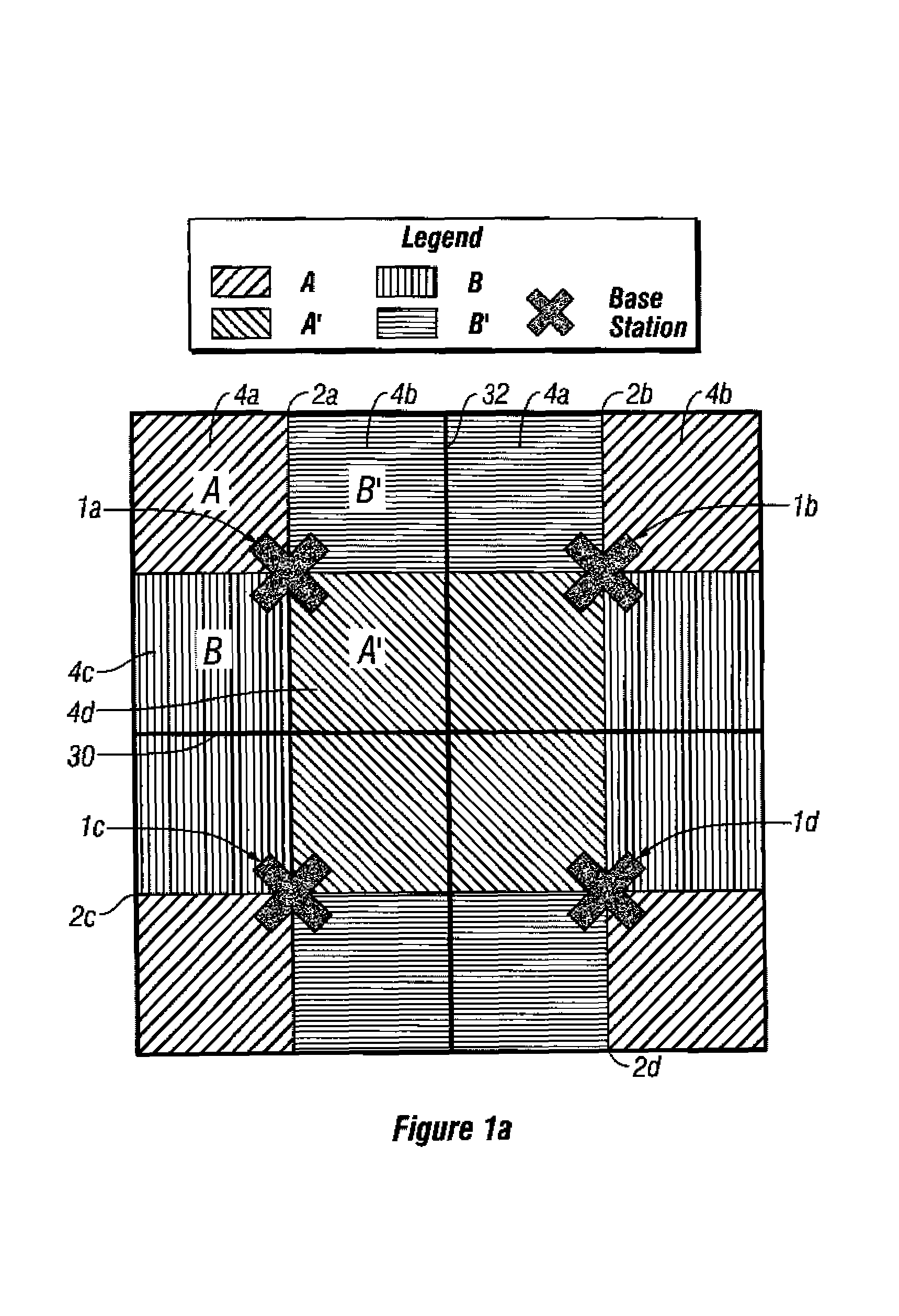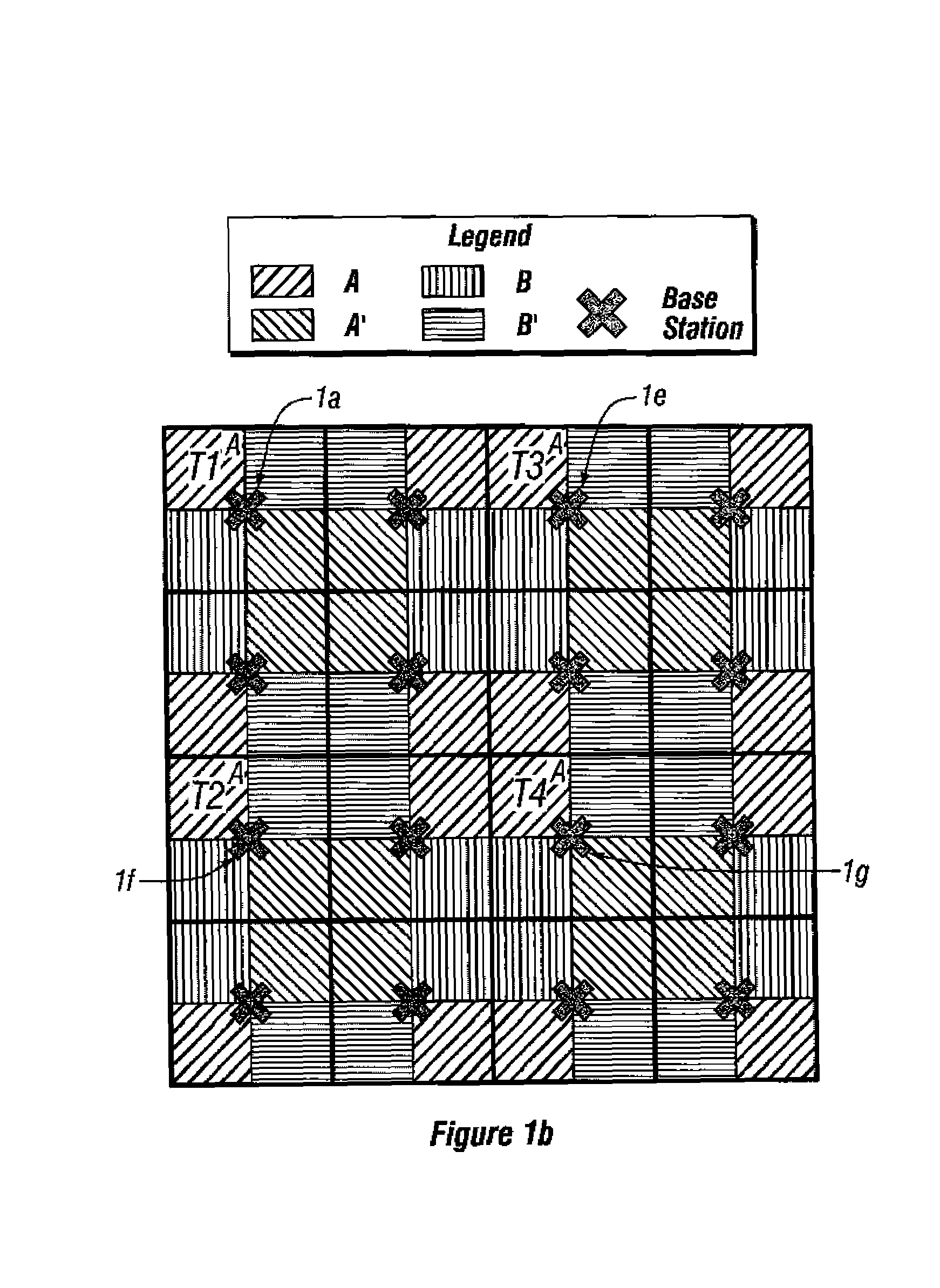Method and system for reducing channel interference in a frame-synchronized wireless communication system
a wireless communication system and channel interference technology, applied in the field of communication systems, can solve the problems of not allowing frame synchronization between base stations, not allowing coordination between base stations, and frequency re-use cannot be used as aggressively as can be used in bwa systems, so as to reduce channel interference, reduce co-channel interference, and reduce co-channel interference
- Summary
- Abstract
- Description
- Claims
- Application Information
AI Technical Summary
Benefits of technology
Problems solved by technology
Method used
Image
Examples
Embodiment Construction
[0032]Throughout this description, the embodiments and examples shown should be considered as exemplars, rather than as limitations.
[0033]An exemplary broadband wireless communication system for use with the embodiments described herein is described in the related U.S. Pat. No. 6,016,311, by Gilbert et al., issued Jan. 18, 2000, entitled “Adaptive Time Division Duplexing Method and System for Dynamic Bandwidth Allocation within a Wireless Communication System”, which is hereby incorporated by reference. The communication system described in U.S. Pat. No. 6,016,311 is an adaptive time division duplexing (ATDD) method and system for duplexing transmissions in wireless communication systems. The ATDD system adapts to the uplink and downlink bandwidth requirements of the channels.
[0034]FIG. 1a is a diagram of a wireless communication system configuration incorporating frequency re-use where a plurality of base stations 1(a)–(d) communicate with fixed terminal stations (i.e., “subscriber...
PUM
 Login to View More
Login to View More Abstract
Description
Claims
Application Information
 Login to View More
Login to View More - R&D
- Intellectual Property
- Life Sciences
- Materials
- Tech Scout
- Unparalleled Data Quality
- Higher Quality Content
- 60% Fewer Hallucinations
Browse by: Latest US Patents, China's latest patents, Technical Efficacy Thesaurus, Application Domain, Technology Topic, Popular Technical Reports.
© 2025 PatSnap. All rights reserved.Legal|Privacy policy|Modern Slavery Act Transparency Statement|Sitemap|About US| Contact US: help@patsnap.com



